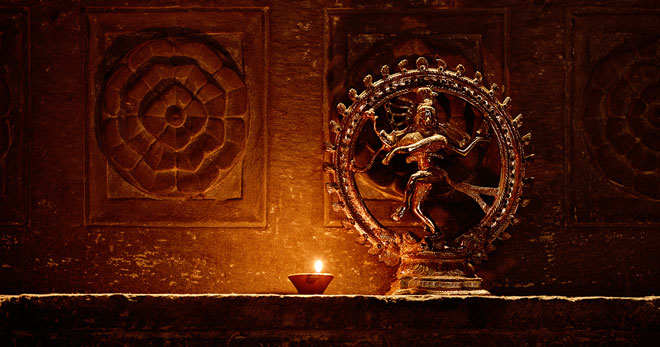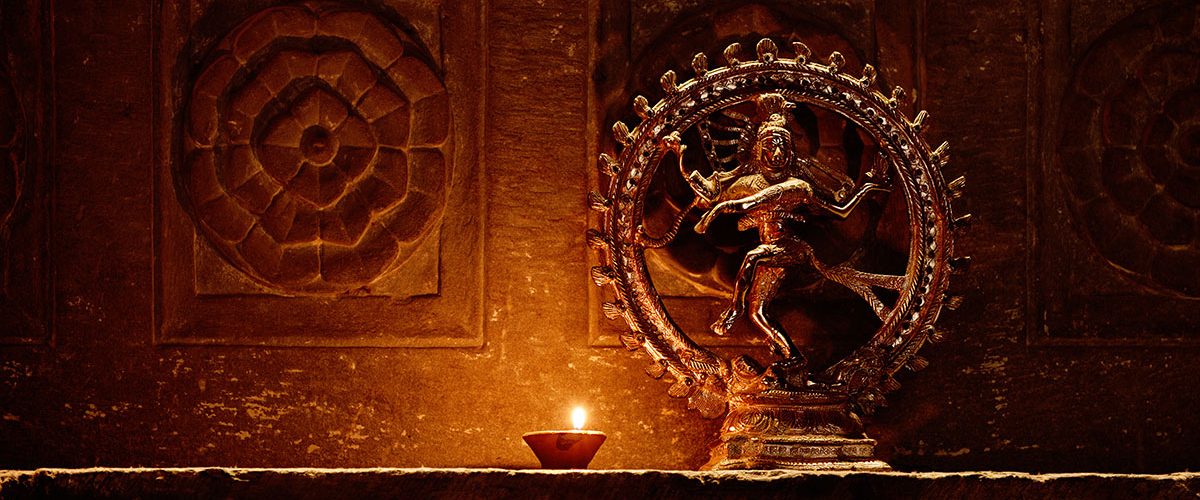
In episode 111 of the podcast astrologer Ernst Wilhelm joins the show to talk about the concept of planetary yogas in Vedic astrology, which are chart placements and combinations that indicate specific outcomes.
Ernst is the author of a book on the topic titled Core Yogas: Yokes to the Fruits of Karmas.
You can find out more information about his work at vedic-astrology.net.
Below you will find the show notes, followed by links to download or stream the recording.
Show Notes
- Introducing Ernst, and talking about his background in Indian astrology.
- 2002 book: Core Yogas: Yokes to the Fruits of Karma
- The concept of yogas as a good access point for western astrologers to get interested in and approach Vedic/Indian astrology.
- Also helpful in terms of seeing points of convergence and divergence between the eastern and western traditions.
- What is a yoga?
- “Yoga means that which joins or yokes.”
- A planetary configuration or combination involving planets in specific, unique positions in the chart.
- Not necessarily just an “aspect”, but often a combination of factors.
- E.g. Ruler of the Ascendant in the 10th, conjunct ruler of 9th in 10th.
- Some are highly auspicious combinations.
- Others are inauspicious.
- Some are given specific names, which often evoke the interpretive principle.
- Mainly used for prediction in natal astrology, from the birth chart.
- Yogas for different topics: Success, wealth, good character, happiness, downfall, poverty, disappointment, etc.
- Not all yogas are created equal
- Developing skills means learning how to prioritize which are more important.
- Ernst’s book Core Yogas covers 214 yogas.
- 89 foundational yogas.
- 125 where the effect only comes about when activated via dasha period.
- The outcome indicated by yogas manifest when activated via a dasha period.
- Mitigating conditions
- Yogas can often be modified for better or worse based on placement by sign, aspect, subdivision, etc.
- This goes both ways.
- Inauspicious yogas can be toned down if the planets are well-situated.
- Auspicious yogas can be marred by planets that are poorly-situated.
- Examples of some yogas that give a good idea of different factors used:
- Nabhasa Yogas: involving all planets in the chart in certain placements.
- E.g. all planets in fixed signs.
- Mala “rosary” Yoga: The angles occupied by benefics.
- Sarpa “serpent” Yoga: The angles occupied by malefics
- All planets in one sign, two signs, etc.
- “Akriti” yogas – means shape or form.
- Similar to 20th century western idea of planetary patterns
- Goes back to the Yavanajataka.
- Various house placement and rulership combinations.
- E.g. Sringataka “mountain having three peaks” Yoga: All planets in the lagna, 5th and 9th.
- Nabhasa Yogas: involving all planets in the chart in certain placements.
- Other types of more specific yogas
- Solar yogas
- Lunar yogas
- Kemadruma yoga. Equivalent to the western concept of void of course.
- Chandra “Moon” Yoga: The 10th lord in an angle, trine, or 2nd from the Moon
- Lagna yogas.
- Malika yogas
- Misc
- Karika “elephant” Yoga: All seven planets in the 7th, 10th, and 11th
- Mridanga “tambour” Yoga: The lagna lord strong and the other six planets in angles, trines, own or exaltation rasis.
- Kalasarpa “time serpent” Yoga: All planets between Ketu and Rahu.
- Yogas Named after Deities
- Varaha “Boar” Yoga: All planets in 1st, 5th, and 4th houses
- Matsya “Fish” Yoga: Benefics in the 9th and lagna, mixed planets in the 5th, and malefics in the 4th and 8th
- This is a good example of a very specific type of yoga.
- Yogas of Character, Virtue and Power
- Chamara “yak tail” Yoga
- 1. The lagna lord exalted in an angle and aspected by Jupiter.
- 2. Two benefics in the lagna, 9th, 10th, or 7th
- Vidyut “glittering” Yoga: The 11th lord deeply exalted with Venus, and in an angle from the lagna lord
- Chamara “yak tail” Yoga
- Final thoughts on using yogas in practice.
–
Transcript
A full transcript of this episode is available here: Episode 111 transcript
Listen to This Episode
You can either play this episode of the podcast directly from the website or download it as an MP3 to your computer by using the buttons below:
Podcast: Play in new window | Download (Duration: 1:43:42 — 47.8MB)


There is so much good new information in this episode for someone unfamiliar with Vedic astrology. Will there be a transcript available?
Yes, eventually, although I may need to find someone who specializes in Vedic astrology to do the transcription. If anyone reading this knows Vedic astrology and wants to transcribe the episode, let me know.
Someone just got in touch with me and a transcript will be forthcoming in the next day or so.
A full transcript is available now here:
https://theastrologypodcast.com/transcripts/planetary-yogas-transcript/
Great talk. By the way who did the transcript? I’ve been looking for someone familiar with these terms for transcriptions.
Thanks! A student of Ernst’s named Liam Tracy did the transcription. I can put him in touch with you if you want.
That would be fantastic. And keep up the good work Chris.
Fantastic podcast! For the first time I feel like I came to understand Vedic astrology a bit better even though I’ve listened to other lectures. Thanks, Chris and Ernst.
Also when Ernst said he used the Tropical Zodiac rather than the Sidereal that rang true. Turning me into a Cancer rather than a Leo doesn’t really match up with my life experiences. When he talked about the Lord of the 7th in the 5th or vice versa – that was super helpful info. Many good nuggets of knowledge in this talk. Thanks again.
As a pure Jyotish practitioner, I thank you for doing this podcast! I have 2 of his books, but missed ‘Core Yogas’!
I look forward to getting it sometime soon…Thanks!!!
It is odd that he let a ‘computer model’ dictate to him that tropical works best…as I see human consciousness as “PRIMARY” in reading a chart, not a linear computer… I still choose what we actually SEE Directly from Earth over a ‘Projected’ Zodiac that only exists within the mind… (and aligns for 1000 years around the heart of Kali yuga, 0AD)…
If you’re speaking of the “observed” zodiac, as many sidereal astrologers refer to, consider that it’s not a full proof argument, considering that some constellations are around 20 degrees in length and others are around 40. In Vedic astrological texts the signs are defined as 30 degree segments of space, which does not correlate to the constellations.
Thanks so much. The fact that you took the time to make show notes for these highly educational episodes is extremely generous and we should all contribute to your patreon account
Hi Chris. Loved this podcast You really are widening my knowledge with these interviews.
Question here with this one on planetary yogas. Ernst said to use the tropical zodiac.
But does this mean we set up the square chart?? This is my first foray into Vedic astrology.
Yes, I believe that he uses the square chart that most Indian astrologers use. I mean, really you could use any chart since it is just a visual representation of essentially the same data, but I believe that typically Indian astrologers use the square chart or the diamond chart.
Ernst’s website has a page with a free Chart Creator, http://vaultoftheheavens.com/VOTH_ChartCreator/Welcome.aspx. Its default is the South Indian square chart, but you could also choose the North Indian chart option offered. The resulting page displays the Dasas, Nakshatras, and more. The page intro says, “This chart calculator uses Tropical Rasis with Sidereal Nakshatras as per the research of Ernst Wilhelm” so this could help clarify how one’s chart and dasas differ using Ernst’s system versus the dasas we get with Solar Fire, for example.
Interesting about Venus/Moon opposing one another from 1st/7th defying expectation because in the Hellenistic/Persian tradition that makes perfect sense.
Could you share a little more about how such a configuration would be interpreted in the Hellenistic/Persian tradition?
Fantastic. I’ve been a Jyotish bender lately, so this came at a most opportune time.
This was an excellent podcast on understanding the links between Western and Jyotish astrology, its history and astronomy. This is exactly what I have been looking for in marrying Vedic techniques to a Western practice. Ernst Wilhelm is not the only Vedic astrologer that is used the tropical zodiac.
Since I have been delving into Jyotish for the past three years, the astronomy history here is valuable back to the time when both zodiacs were aligned. Vic DiCara has much to stay about this too.
It is clear to me that studying current mundane events have proved to me that the tropical zodiac is more descriptive of current events.
Well done.
My man you are the podcast I’ve been looking for! The next Tim Ferris! At least in tone.
Anyways my first astrological experience was with a pandit but I was too young to remember. Mother said it had something to do with financial success, so far no dice!! Found Ernst’s anecdote appropriate. Thanks for bringing him on, the internet is hard to dig through sometimes, especially with these old texts.
The level of intricacy and clarity from this episode in particular — possibly your best episode, although I have not heard every one just yet — proves that the best things in life really are “free.”
The amount of work you have put in is astounding.
Looking forward to becoming a Patreon and helping fund additional transcriptions.